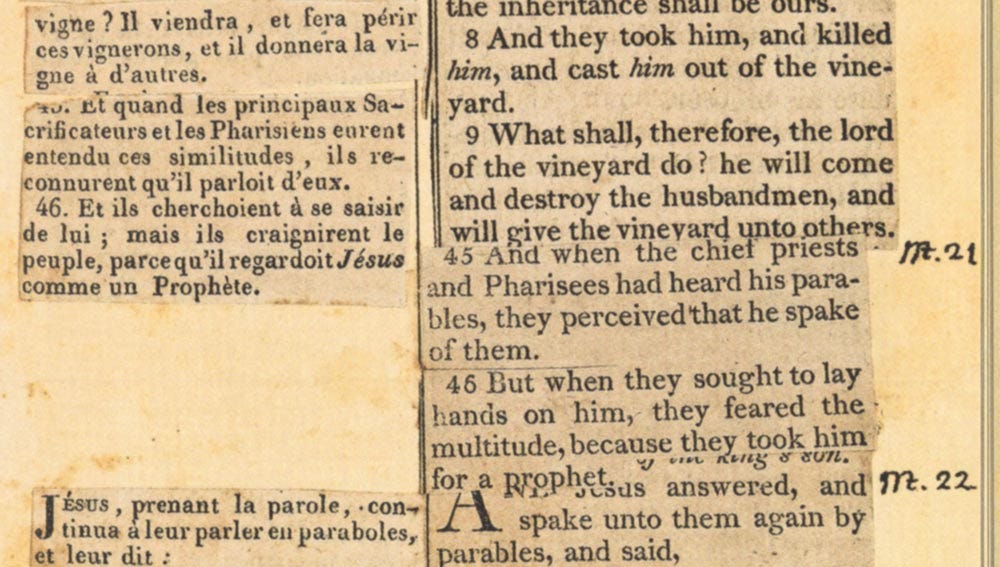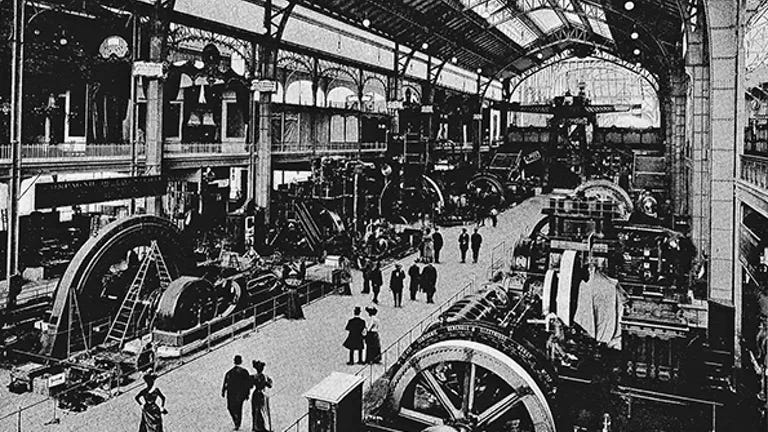The Miracles of Christ, part 2
oh, just one more thing...
In this post, I look back and reflect on points already made, to demonstrate that something that appears new in the New Apostolic Reformation is not as novel as it may seem. I refer to the way NAR proponents explain the miracles of Christ (as presented in detail in my last post).
Thomas Jefferson (1743-1826) did not believe that Jesus was divine, and thought the Gospel accounts of his miracles and resurrection were later additions to the original texts. He did believe that Jesus’s moral teachings offered “the most sublime and benevolent code of morals which has ever been offered to man.” So, armed with a sharp knife and some glue, he assembled his own version of the New Testament, keeping the teachings and parables of Jesus, while leaving out the accounts of his miracles and resurrection. He called the resulting work The Life and Morals of Jesus of Nazareth.
Later in the same century, the United States produced New Thought (see this earlier post). Like Jefferson, the originators of New Thought did not discard Jesus, and presented him as an ideal example. Unlike Jefferson, they thought that Jesus really did work miraculous healings. But how exactly?
Writing in an age of life-changing scientific breakthroughs, when new inventions like the railroad, the steamship, the telegraph, and the telephone were annihilating distance and transforming human life, the teachers of New Thought naturally thought in terms of “science.” Science made things happen. Henry Adams (1838 – 1918) defined true science as “the development or economy of forces.” Science was power.
Contemplating an enormous dynamo (electrical generator) at the Paris Exposition of 1900, Adams feared that the power supplied by technology would replace the spiritual power formerly offered by religion. He was not wrong about that risk, but he did not avert to something that had already begun to happen: Men and women, instead of discarding religion entirely, were creating strange new hybrids of religion and science, based on the belief that the power to cure diseases did not come from x-rays or electricity or new pharmaceutical discoveries, but from the immaterial power of human thought. In fact, the New Thought teachers spoke of the power of thought, or faith, in the same way that Henry Adams considered the electricity produced by a dynamo, or the rays emanating from a lump of radium. Invisible and silent yet, when rightly deployed, capable of curing a multitude of ills and transforming one’s life.
Like Jefferson, the originators of New Thought did not wish to do without Jesus entirely even if some, like Phineas Quimby, had no personal regard for him. It served their purposes to retain him in their belief system, while discarding those elements of traditional Christian belief that explained why Jesus could be considered a savior as well as a healer. Unlike Jefferson, the proponents of New Thought did not deny the miracles of Jesus, especially his miracles of healing. For them, Jesus was useful, not as a universal redeemer and savior, but as a potent illustration of their own theories of how diseases might be cured. Each in his or her own way taught that Jesus was able to work miraculous healings, not because he was different in any essential way from you and me, but because he had discovered a universal principle or science of healing accessible to anyone. For Phineas Quimby, it was the mind cure. For Mary Baker Eddy, it was Christian Science. For Charles Fillmore and Unity, it was a universal principle of mind. For Ralph Waldo Trine, it was the scientific principle that our thoughts and words have the power to change reality. E W. Kenyon went in a different direction, attributing Jesus’ power to heal to a legal, not scientific principle.
What did they all have in common? In every case, they believed that the power Jesus used to work miracles of healing was extrinsic to him. This precisely is the point of contact between New Thought and the present-day teaching that Jesus worked miracles as a man, as presented by Protestants like Charles Kraft and Bill Johnson, and Catholics like Mary Healy and Patrick Reis. As we saw in the previous post, they teach that Jesus worked miracles, not by his own divine power as the only-begotten Son of God, but as a man fully dependent on God, a man yielded to or possessed by the Holy Spirit. This gives them a way to explain how any Christian can work the same miracles Jesus did, by tapping into the same external power source. In their view, you don’t have to be the unique Son of God, a Divine Person united to a human nature, to do the same works Jesus did; you just have to discover the universal principle or science or law demonstrated in the life and miracles of Jesus. This relegates or reduces Jesus to “our standard of ministry” or our “older brother;” in other words, just another “wayshower.”
In a post published April 29. 2024, I wrote
… I want to point out a belief common to all the [New Thought[ figures mentioned above: that Jesus was able to work miracles, not because He was the eternal, divine, Son of God, but because He had discovered a universal principle or “science” accessible to anyone or, in the case of Kenyon, because He possessed an impersonal “authority” no different from what was subsequently entrusted to “the believer” of today. Put a pin in that. We will return to it.
After only seven months, Faithful Reader, we have done so.




Perhaps of interest also: in a 1910 edition of "The Catechism Explained" by Fr Spirago, he states plainly, "Christ proved His divine mission and truth of His doctrine by many miracles... Christ of his own power worked miracles; others in the name of God or of Christ."
Our modern catechism seems more nuanced, saying Jesus “accompanied his words with many might works…which manifest that the kingdom is present within him and attest he was the promised Messiah. The signs worked by Jesus attest that the Father has sent him."
I wonder if it's because the post-Vatican II church began more consciously emphasizing the humanity of Jesus as opposed to divinity.
One can see the confusion given the Catechism (695) says: "The humanity the Son assumed was entirely anointed by the Holy Spirit. The Holy Spirit established him as 'Christ'....The Spirit filled Christ and the power of the Spirit went out from him in his acts of healing and of saving. Finally, it was the Spirit who raised Jesus from the dead."
One could be forgiven for thinking the miracles of Jesus came via the Holy Spirit.